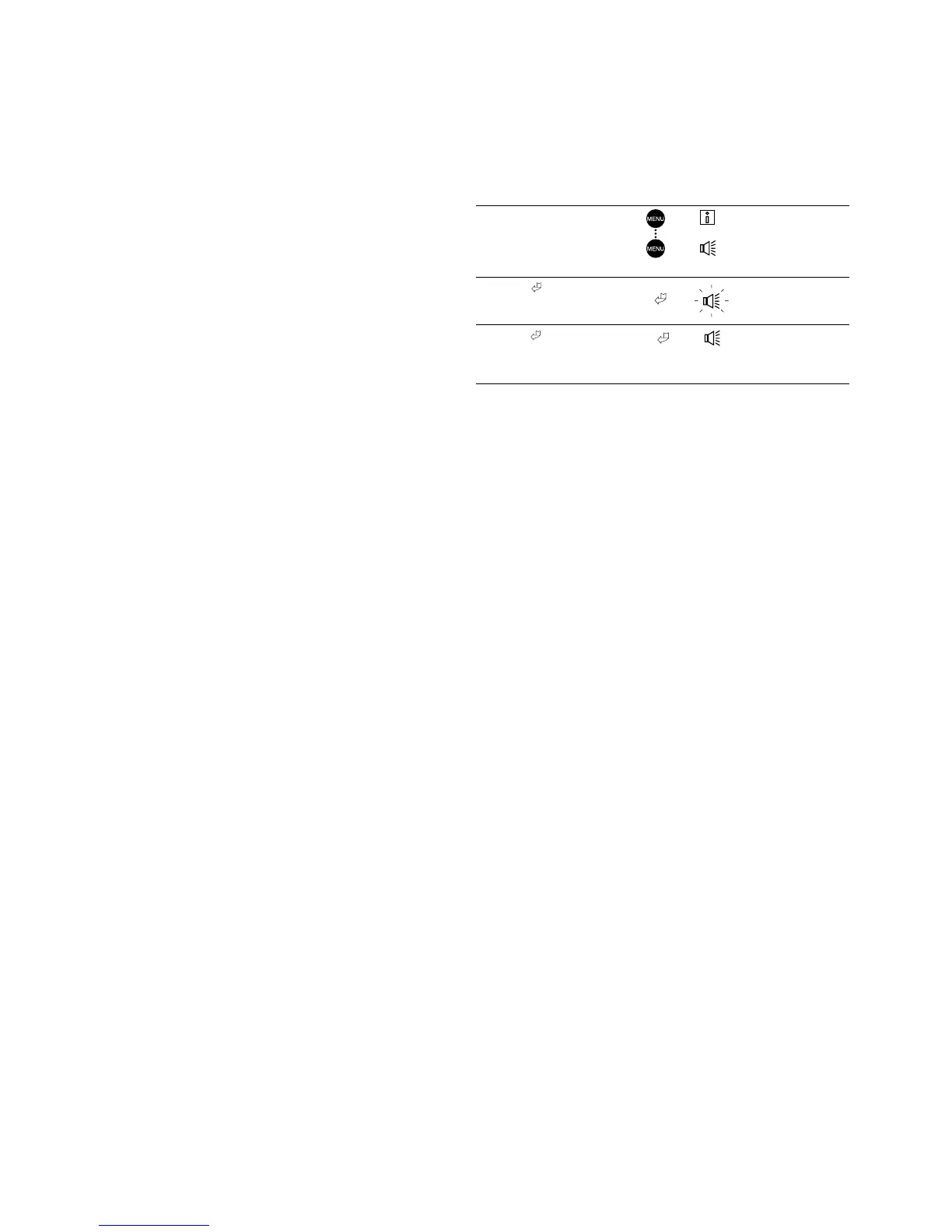32
OPERATION PRESS BLOCK 3 BLOCK 1 BLOCK 2
KEY LED DISPLAY DISPLAY
Hold down the MENU button
until the LED for Alarms lights.
Block 2 displays the number of
alarms active (2 alarms in this
example).
Press the button to authorise
the alarms to be reset. The Alarm
menu LED flashes and 0 is
displayed in block 2.
Press the button again to
validate the reset. The Alarm menu
LED stops flashing. “Good” is
displayed for two seconds, then
‘2AL’ again, and finally ‘0 AL’.
Alarms can be reset even if the unit is running. This means that
an alarm can be reset without stopping the machine.
In the event of a power supply interrupt, the unit restarts
automatically without the need for an external command.
However, any faults active when the supply is interrupted are
saved and may in certain cases prevent a circuit or unit from
restarting.
6.4 - Alarm codes
The following list gives a complete description of each alarm
code and its possible cause.
0
02 AL
00
0
Good
then
2 AL
then 0 AL
6 - DIAGNOSTICS - TROUBLESHOOTING
6.1 - GENERAL
The PRO-DIALOG Plus control system has many fault tracing
aid functions. The local interface and its various menus give
access to all the units operating conditions. The test function
makes it possible to run a quick test of all the devices on the
unit.
If an operating fault is detected, an alarm is activated and an
alarm code is stored in the Alarm menu.
6.2 - Displaying alarms
The alarm LEDs on the summary interface (see section 4.3.2)
give a quick display of the status of each circuit and the unit as
a whole.
• A flashing LED shows that the circuit is operating but there
is an alarm.
• A steady LED shows that the circuit has been shut down due
to a fault.
The Alarm menu on the main interface displays up to 5 fault
codes that are active on the unit.
6.3 - Resetting alarms
When the cause of the alarm has been corrected the alarm can
be reset, depending on the type, either automatically on return
to normal, or manually when action has been taken on the unit.
A manual reset must be run from the main interface using the
following procedure:
